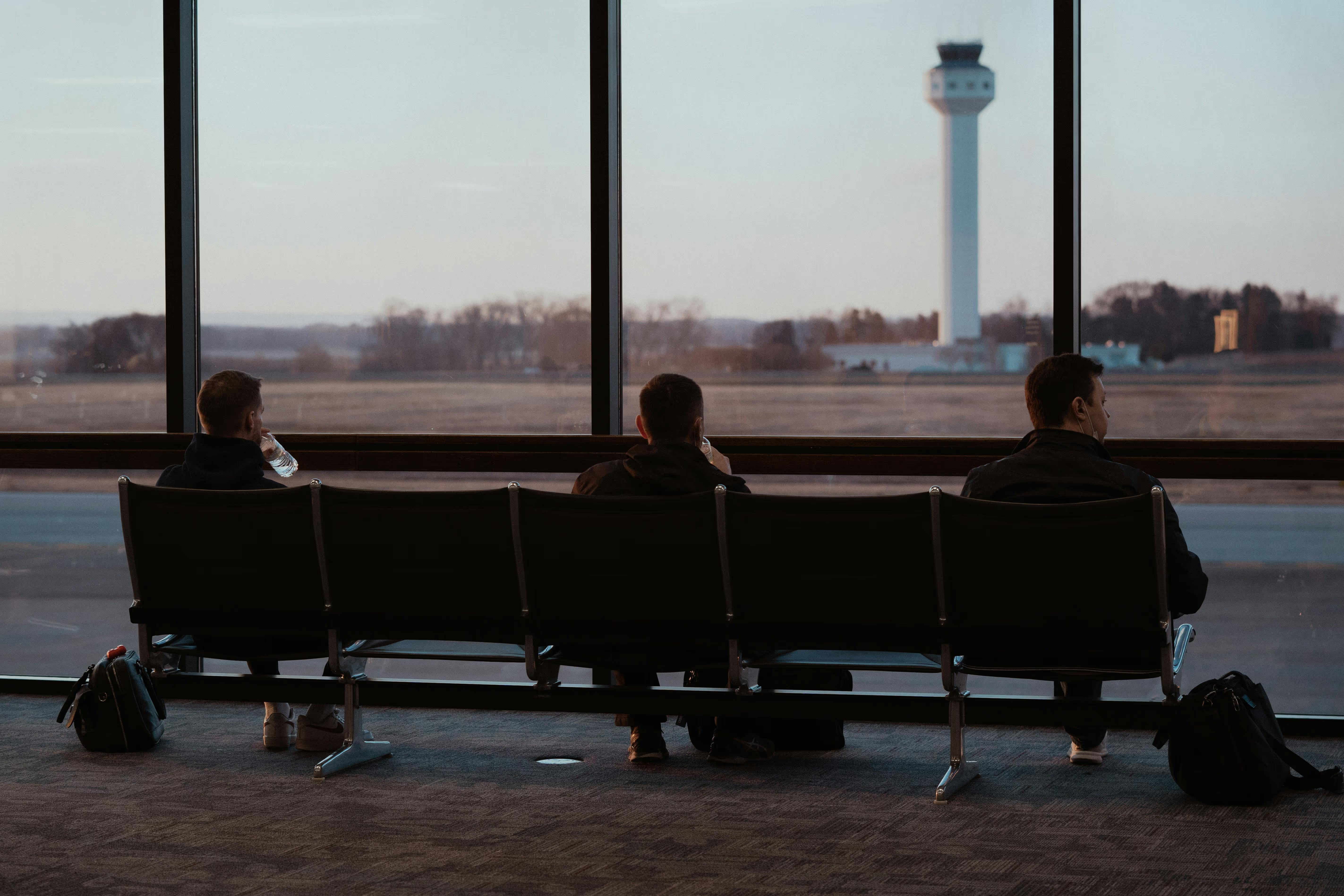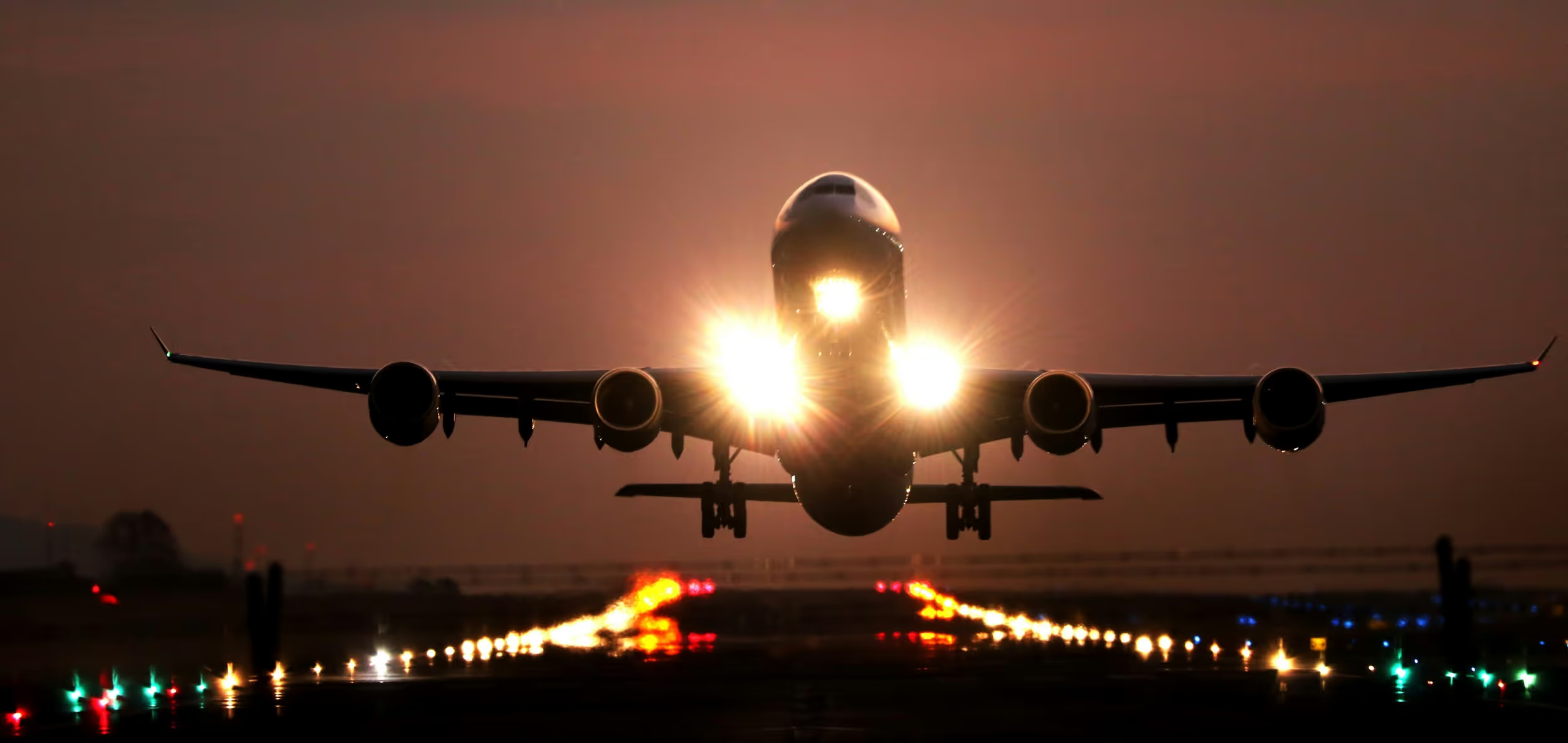Reasons for flight delays: A guide for business travelers

Picture this: You’re racing from a client breakfast in Toronto to an afternoon pitch in Chicago. The boardroom is booked, the slides are set up—then your phone buzzes with a notification that your flight’s delayed.
Unfortunately, this situation is all too common. Last year, just over one in five U.S. flights landed late. And delays and cancellations aren’t cheap—missed connections and disrupted schedules cost companies valuable time and could rack up thousands in rebooking fees, lost productivity, and opportunity costs.
This guide explores the reasons for flight delays, how to stay on schedule, and what to do when plans unravel.
Why do flights get delayed?
A few common factors cause flights to be delayed or canceled. Here’s a look at the usual suspects.
Bad weather and poor visibility
Weather is one of the most common reasons flights get delayed or cancelled. Snow, thunderstorms, fog, and extreme heat can slow air traffic or even shut down runways completely.
High air traffic volume
Think of the sky as a highway. More planes in the sky sometimes cause congestion, plus longer waits for each plane to take off or land. During holidays, long weekends, or big events, air traffic skyrockets.
Mechanical problems or maintenance checks
Just like cars, planes need regular maintenance. Unexpected problems like a warning light or sensor error can occur before takeoff, sidelining an aircraft for hours. If it’s unsafe to fly, the plane will stay grounded until it’s fixed or replaced. Airlines usually try to switch to another aircraft, but that can take time, especially on tight flight schedules.
Flight crew delays and rest requirements
Pilots and flight attendants must follow strict rules for safety, including a minimum rest period between shifts. They can't legally work the next leg if they’re delayed on a previous flight and go over their duty time limit. This happens more often with connecting crews or those flying late in the day.
A 2022 FAA rule boosted that rest window to 10 straight hours, so a crew that arrives late may need a long pause before working their next leg. These regulations have helped improve safety, but they make things more complicated when flights don’t arrive or depart on time.
Airport or security disruptions
Power outages, baggage belt malfunctions, or security line backups can slow down flights or bottleneck entire terminals, even if the plane and crew are ready. These situations lead to departure delays as planes wait for passengers to get through the queue.
Loading luggage
Luggage loading issues can cause delays, especially on full flights. Baggage systems also aren’t immune to tech trouble—when equipment goes down, crews have to sort it out manually, which can delay departures and cause suitcases to pile up.
Management system errors
Behind the scenes, airlines and airports rely on massive IT systems to run schedules, manage crew assignments, and send updates to pilots. If those systems go down, everything slows to a crawl while the FAA delays or reroutes flights.
Fuel supply
Delays aren’t always related to technology failures—a simple fuel shortage can bring service to a halt. Delivery delays can cause a shortage, meaning planes must wait longer to refuel or even fly to another airport for a top-up. While rare, fuel logistics can impact even major airlines when something unexpected happens.
4 tips to stay on schedule and reduce the risk of flight delays
Worried about an upcoming trip with tight connections? Here are some tips to help you mitigate your risk of delays:
- Choose early flights to protect tight business schedules: Morning flights often leave before storms build and crew schedules drift. Early-bird legs tend to recover fastest when things go wrong.
- Prioritize nonstop flights to avoid connection risks and lost productivity: Every connection doubles your exposure to late arrivals, missed gates, and lost productivity. If nonstop isn’t possible, pick the itinerary with the longest layover.
- Consider smaller airports for faster transit: Secondary airports have shorter security lines and face fewer runway traffic jams than their mega-hub neighbors.
- Review airline performance for on-time reliability: DOT’s monthly Air Travel Consumer Report ranks carriers by punctuality, allowing you to see which airlines and flight numbers score best for punctual departures.
Steps to take when a flight is delayed
Despite your best efforts, factors beyond your control may cause travel disruptions. Here’s what to do if your flight is delayed.
Monitor status updates from the airline
The airline’s app or website is usually the fastest way to get updates—sometimes even faster than the gate agent. Sign up for text or app alerts when you book, and check for push notifications regularly. If your flight is delayed, watch closely for gate changes or sudden updates that move you to another connection.
Speak to travel managers about rebooking options
If you book through a platform like Engine, use their travel support team. Business travel platforms often have access to faster rebooking tools and may be able to reserve seats before they’re made public. Don’t waste time waiting in line—get on the phone or start a live chat as soon as the delay is confirmed.
Inform your business host contact if the delay impacts both schedules
If your meeting or event is time-sensitive, contact your business host as soon as you know you’ll be late. Give them your new estimated arrival time, and suggest alternate ways to stay connected, like joining remotely or rescheduling. A quick email or chat message shows professionalism and gives clients the chance to rearrange agendas.
Here’s an example of a courteous message you could send to your host: “Hi, just a heads up that my flight to Chicago is delayed by 90 minutes. I’ll still be able to join the presentation, but I may need to shift our coffee catch-up to later. I’ll keep you posted!”
Understand airline delay policies and compensation
Most North American carriers now guarantee meal vouchers, rebooking, or even hotel stays if a delay is considered “controllable,” like a staffing or maintenance issue. Some airlines add cash refunds or upgrades in specific cases, but they're usually not required to compensate if the delay is “uncontrollable” (like a thunderstorm).
Save receipts for any extra costs and business expense submissions
Keep any meal receipts, Wi-Fi passes, or last-minute hotel stay bills related to your travel expenses. If you use an expense app, take clear pictures of your receipts and log the details right away. It’s easy to forget, especially if you’re in a time crunch or under pressure. Clear records speed reimbursement and demonstrate that you’re a careful spender.
Quick tip: Note who you spoke with at the airline if they promised reimbursement or issued a travel credit—it can help resolve any issues later.
Manage business travel smarter with Engine
Flight delays happen, but they don’t have to completely derail your agenda and budget. Engine’s all-in-one platform connects you to multiple airlines, hotels, and car rental brands on one screen, making comparing records, pricing, and loyalty perks easy.
Already booking with Engine? Next time you need to find out the reason for a flight delay or find a same-day re-route, open Engine, tap “Flight Status,” and book the best alternative flight in minutes.
Stay productive in the air and on the ground: Discover Engine and keep every business trip on schedule.










.jpg)



.avif)
.avif)







